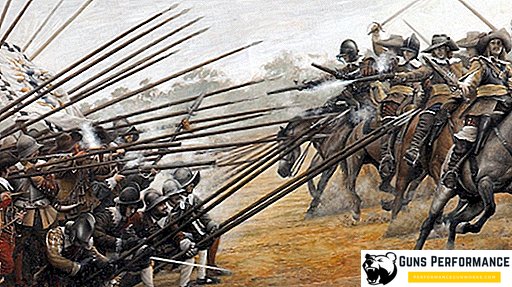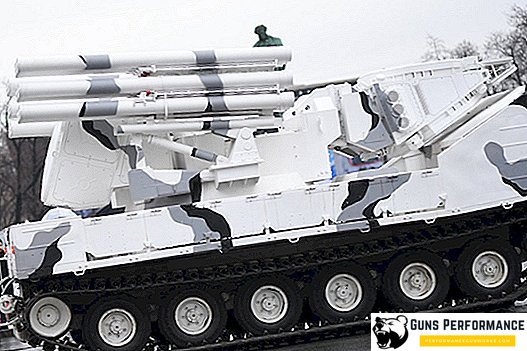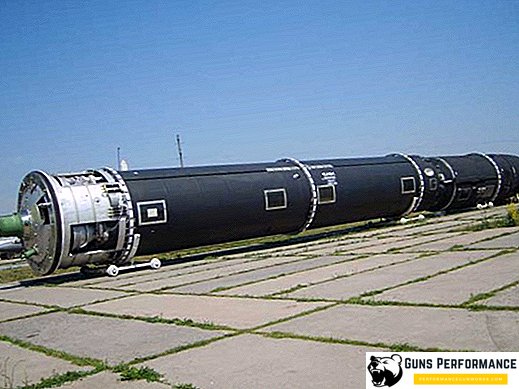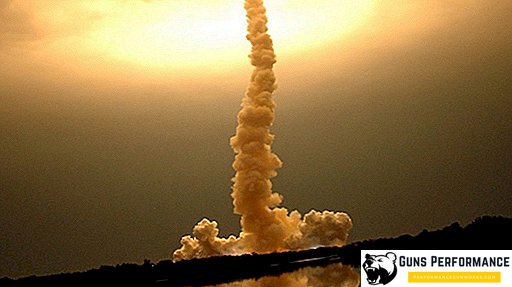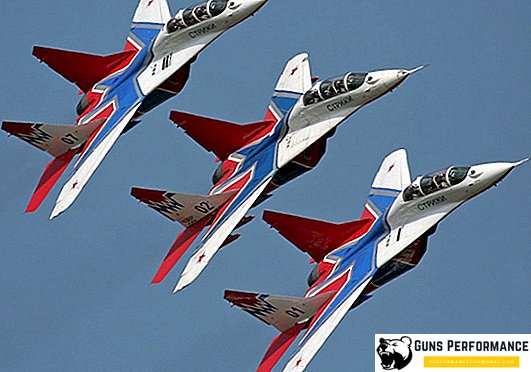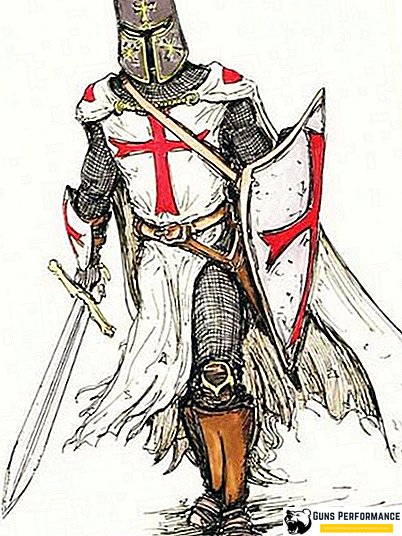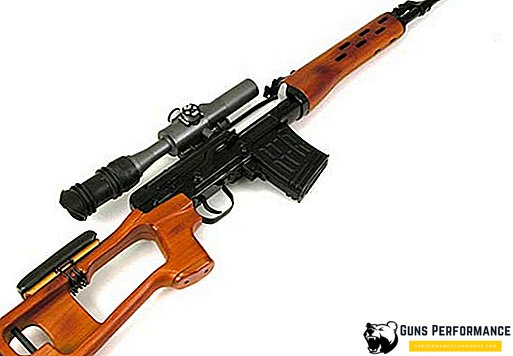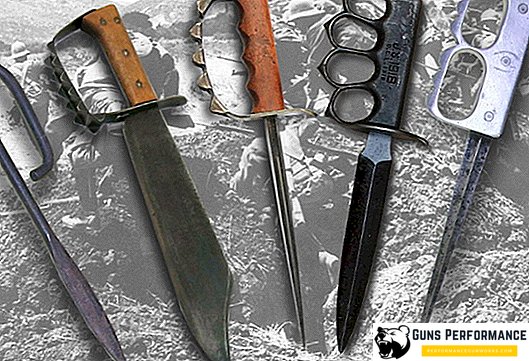
A trench or trench knife was widespread during the First World War, although some self-made samples were found in soldiers before. Despite the fact that the wars of the 20th century were quite technological, and by the beginning of the Great Patriotic War, cold weapons were almost everywhere displaced from the battlefield, the trench knife managed to hold its ground until the 21st century.
It is believed that the army bayonet at the beginning of the 20th century was supposed to replace all cold weapons, but he did not cope with this task. Faced with the horrors of a trench-melee, the belligerents turned out to be practically unarmed in it. As I testify the manuscripts of those years, not only fists, but even teeth were used. It is for this reason that most of the survivors in the trench meat grinder tried to arm themselves with any knives, batons, clubs or bayonets shot from rifles.
First trench knives

It would seem that firearms have long ago supplanted the cold from the military arena, and the soldiers simply need to be equipped with revolvers. But this task turned out to be impossible, and during World War II, soldiers did not have short-barreled personal weapons. It is for this reason that they began to supply short-limb weapons.
The first models of trench knives, and other weapons used in close trenches, can be divided into the following categories:
- Knives, the shape of the blades of which resembled cleavers. Heavy and massive products designed for chopping blows. They had iron sheaths. Such knives first appeared in Germany, after spread throughout Europe. However, the very first battles showed their low efficiency. The metal sheath was too heavy, and the length of the blade did not at all contribute to stabbing;
- Homemade knives and daggers;
- Trench batons;
- Different kind of brass knuckles.
Some soldiers even used battle chains during the war - but these were isolated incidents. A prominent representative of trench choppers is the Russian bebut of the 1907 model.
Self reworking trench knives
The inability of the military command to equip its troops with effective hand-to-hand weapons led to the appearance of a huge number of improvised knives. Swordsman blades were shortened, and the blades were given a more convenient form for piercing. The handles were also reworked, a massive guard appeared, often turning into a bow. Now the hand did not jump off the blade when delivering a powerful thrust.
In addition to alterations from hacks, the rifle bayonet trench knives were extremely popular. Its shape was ideally suited for the injection, so it was these knives that became the basis for creating the first factory models.
The first factory models of trench knives

The very first factory weapon for trench fights is the knife Venger 1870, known among the soldiers under the name "Avenger". The French army received this knife in 1916, although, judging by its name, it should have appeared at least 45 years earlier. The appearance of the first factory weapons for specific needs gave rise to real competition among European knife companies.
In Germany, which has long been famous for its gunsmiths, the release of trench knives quickly established several large firms. Most German trench knives had similar features:
- Blade length - about 125 mm;
- Width - 20 mm;
- Wooden handle, usually consisting of two halves;
- The blade could be with the valleys, but most often instead of the valleres, stiffeners were used.
Wooden lining fastened with rivets running through. It was these models that served as the prototype for the famous Wehrmacht trench knife, which passed through two world wars of the 20th century.
As for the Americans, they had their own opinion regarding the manufacture of a trench knife. Since the US soldiers hardly had a chance to participate in the heat of the First World War, their trench knife M 1917 embodied all the most ridiculous ideas about an effective melee weapon. The creators turned out a strange design, reminiscent of both the stylet and homemade brass knuckles.
This weapon was quickly rejected by those US Army soldiers who owned hand-to-hand combat skills. It was impossible to use effective knuckles with blows, and the blade itself was suitable only for piercing blows. In addition, because of its subtlety and fragility, it could break from fairly weak flexion. In this regard, the command of US troops announced a competition to create a new type of trench knife.
The appearance of the trench knife M 1918

A new knife for trench battles was supposed not only to prick, but also to cut, therefore the stylet blade shape was not considered in principle. New weapons should have the following characteristics:
- Ideal to lie in the palm of your hand;
- Easy to remove from the sheath;
- Have brass knuckles;
- It is desirable that the blade was a dagger type;
- The handle was supposed to be metal.
It is such a weapon developed by engineer Mac-Neri. The new knife, which had a blade length of about 17 cm, resembled a hybrid of brass knuckles with a dagger. The new weapon was enthusiastically accepted by the US military, who often used brass knuckles in civilian life.
However, in practice, the 1918 M knife had several serious drawbacks:
- The joint of the "knuckles-blade" was weakened, because of which the knife could break there;
- In general, a bunch of "knife-knuckles" is not the most successful. It makes no sense to beat with brass knuckles when you can strike with a longer and more effective blade.
Nevertheless, due to the fact that the knife M 1918 never visited this trench melee, it is still considered almost the benchmark of a trench knife.
German tactical knives

After the short-bladed edged weapons showed their effectiveness during the First World War, they became an invariable attribute of the ammunition of German soldiers. The knives of the Second World War in Germany almost retained their shape, but the scabbards for them were modified several times.
The most interesting model of the German production since WWII is the Puma knife. It was a real universal weapon and helper in domestic matters. The use of bakelite as a material for the handle made it possible to make the handle durable and moisture resistant. While keeping the knife free from dampness, it was still worth it, because the blade could rust.
In 1942, German industry mastered the production of a new infantry blade, which was no longer forged, but stamped. This greatly simplified production, although the quality of the product fell. In addition, around the same time, the famous Luftwaffe combat knife appeared, which also did not differ much in form from the knives of the First World War.
Modern models of trench knives

At present, it is difficult to imagine the production of a specific cold weapon, intended to destroy manpower in the trenches. Now world manufacturers produce a wide range of short-bladed weapons for a wide variety of functions, including folding models, since the main task of neutralizing enemy personnel is performed by firearms.
However, in our time, the American trench knife M3, which was developed back in 1943, is being produced. Now it is produced not only in the USA, but also in Germany. This is a real weapon, and it is highly undesirable to use it as a universal tourist knife. A thick butt and a large angle of sharpening do the household work with this knife as a real test, and a one-and-a-half sharpening is intended for delivering powerful piercing punches.
Trench knives appeared because of the need for an effective trench combat weapon. All modern models of combat knives are made on their basis.


